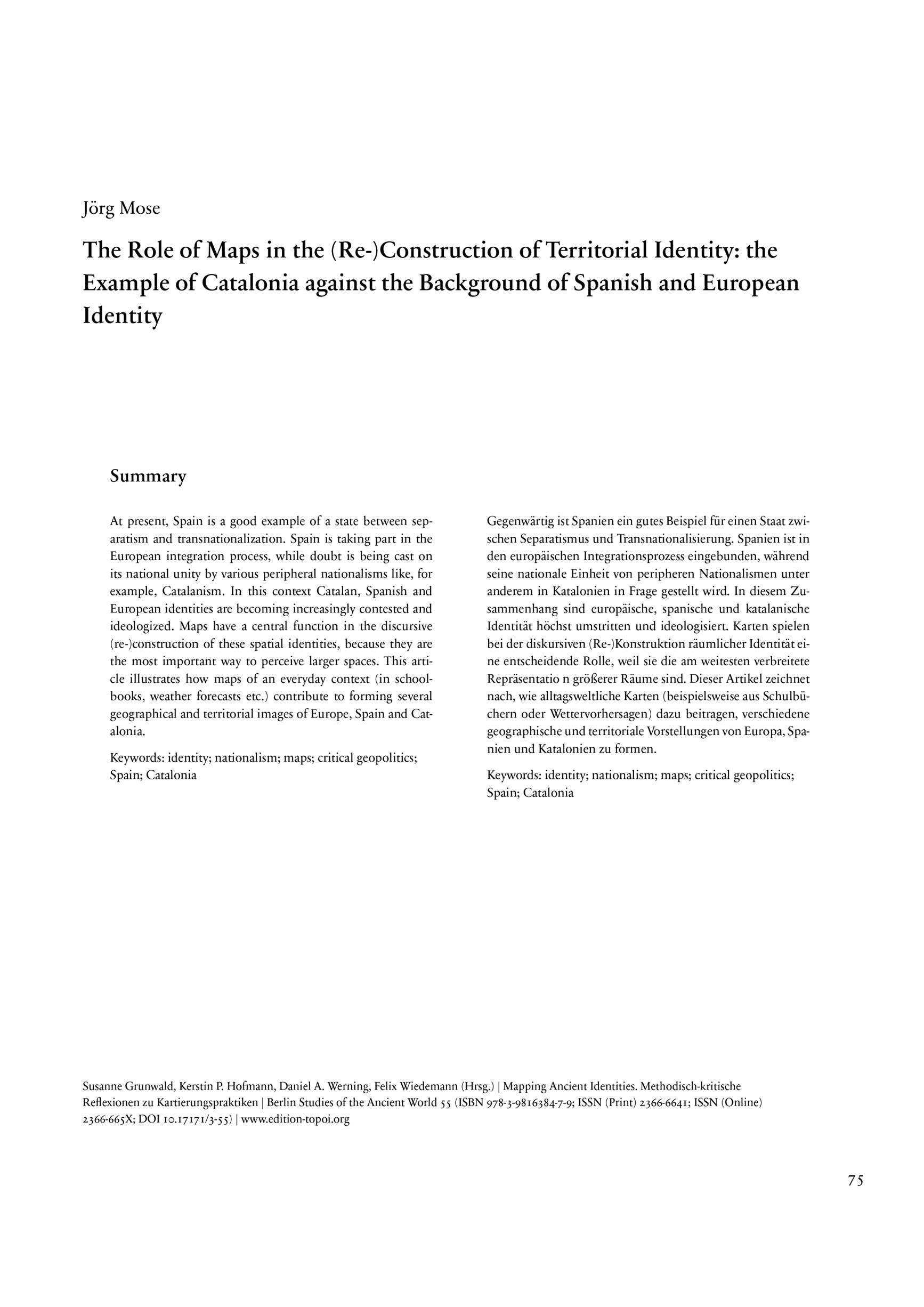The Role of Maps in the (Re-)Construction of Territorial Identity: the Example of Catalonia against the Background of Spanish and European Identity
At present, Spain is a good example of a state between separatism and transnationalization. Spain is taking part in the European integration process, while doubt is being cast on its national unity by various peripheral nationalisms like, for example, Catalanism. In this context Catalan, Spanish and European identities are becoming increasingly contested and ideologized. Maps have a central function in the discursive (re-)construction of these spatial identities, because they are the most important way to perceive larger spaces. This article illustrates how maps of an everyday context (in schoolbooks, weather forecasts etc.) contribute to forming several geographical and territorial images of Europe, Spain and Catalonia.
Gegenwärtig ist Spanien ein gutes Beispiel für einen Staat zwischen Separatismus und Transnationalisierung. Spanien ist in den europäischen Integrationsprozess eingebunden, während seine nationale Einheit von peripheren Nationalismen unteranderem in Katalonien in Frage gestellt wird. In diesem Zusammenhangsind europäische, spanische und katalanische Identität höchst umstritten und ideologisiert. Karten spielen bei der diskursiven (Re-)Konstruktion räumlicher Identität eine entscheidende Rolle, weil sie die am weitesten verbreitete Repräsentation größerer Räume sind. Dieser Artikel zeichnet nach, wie alltagsweltliche Karten (beispielsweise aus Schulbüchern oder Wettervorhersagen) dazu beitragen, verschiedene geographische und territoriale Vorstellungen von Europa, Spanien und Katalonien zu formen.

